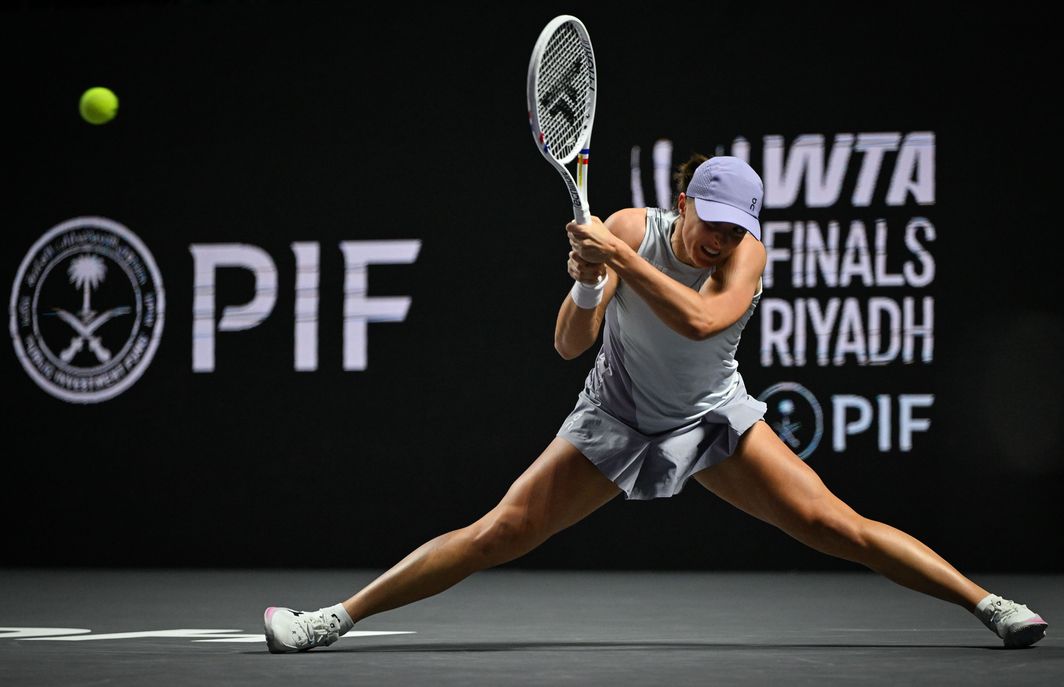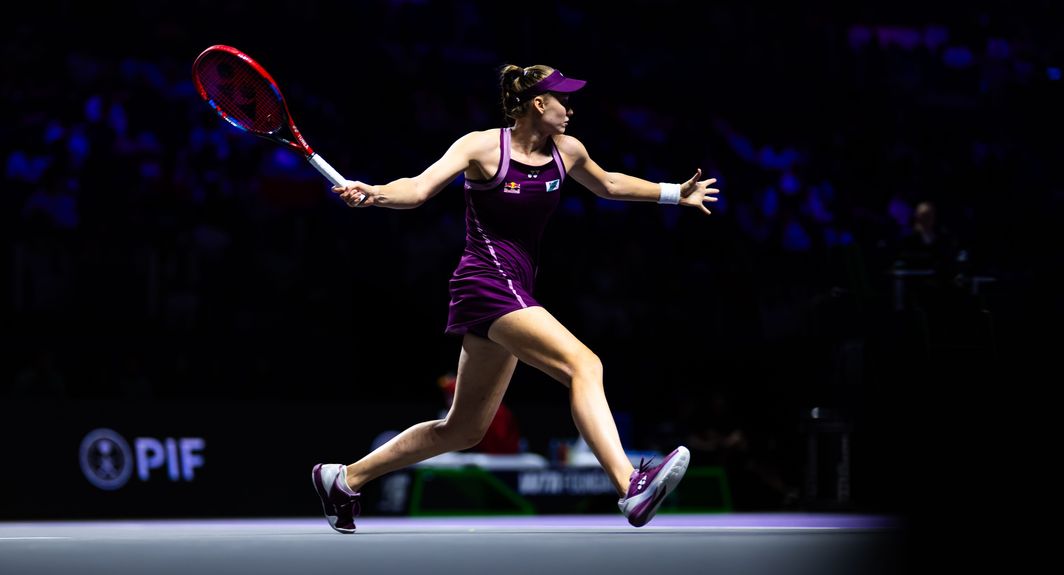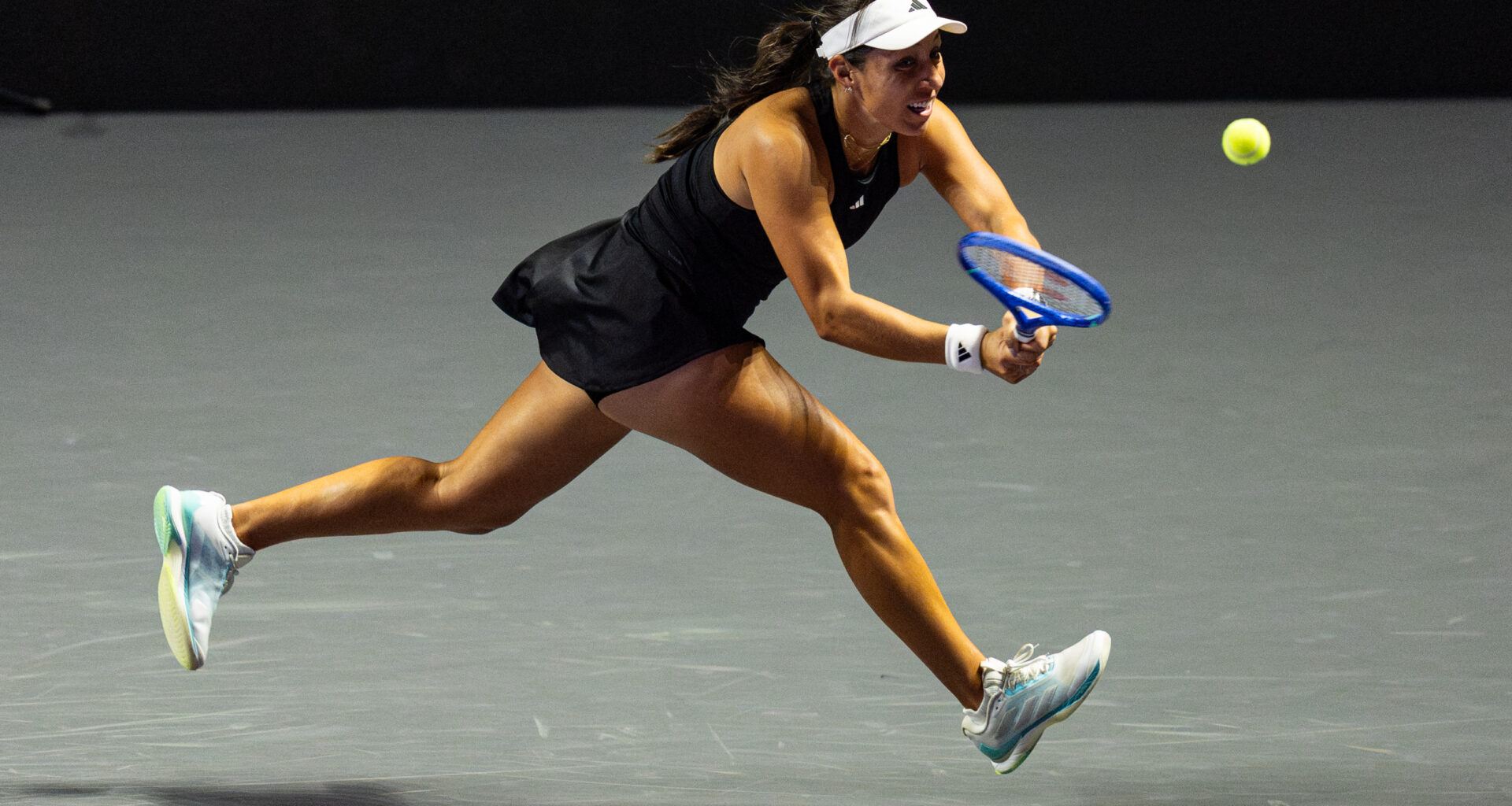RIYADH, Saudi Arabia — The ball has been struck, and time is already running out. You have about a second to read its direction — and somehow get there to meet it.
It’s coming at you with the speed of a car on the highway, except it’s smaller, spinning and bending through the air. Feet moving, mind calculating geometry, you stay balanced and maneuver your body into position without ever taking your eyes off it. Then comes the release: Uncoil at the perfect moment, find the sweet spot — a matter of centimeters — and swing through, adding pace and spin, sending it to the weakest patch of court on the other side.
What could possibly go wrong?
The searing serves, the fierce forehands and those blazing backhand winners down the line draw the oohs and ahhs, but they’ll never happen if you don’t get there on time. It’s not a popular subject on social media, but players and coaches will tell you that sound footwork is mandatory for the elite players here at the WTA Finals.
World No. 2 Iga Swiatek: “Crucial.”
Jean-Christophe Faurel Coco Gauff’s coach: “I talk way more about footwork than technique.”
Eighteen-time major champion Chris Evert: “Vital.”
Mark Merklein, Jessica Pegula’s co-coach: “Huge.”
Former No. 1 Simona Halep: “For me, I think it was the most important.”
Anton Dubrov, Aryna Sabalenka’s coach: “It’s like 90 percent of tennis.”
Former World No. 1 Angelique Kerber: “If you don’t have good footwork, you can’t have a good mentality.”
If you play, say, 60 matches a year and they average 130 points each, factor in an average of two or three shots to defend per point — and you’re looking at 20,000-plus scrambles to retrieve that elusive yellow ball each year. Side to side, forward and back, even diagonally, you have to go get it.
The dimensions of the space you’re defending: 39 feet by 27 feet and another 10 feet or so of airspace. That works out to more than 10,000 cubic feet that you’re responsible for.
Exhausting, but necessary. Putting yourself in position to succeed … It starts with the feet.
“It’s a moving game, you’ve got to be able to move,” said Bjorn Fratangelo, the coach and husband of No. 6 singles seed Madison Keys. “Good footwork gives you the best scenario for your best outcome to hit the ball.”
A question of balance
Some players, often gifted with size and strength, rely on offensive power to take time away from the opponent. Others compensate with defense and speed.
“Because I didn’t have big height,” said two-time Grand Slam champion Simona Halep, who is 5-foot-6. “To be able to move fast and actually to have anticipation … and also sometimes I was playing too far back, and it helped me to recover by being fast.”

Getty Images
Jasmine Paolini, listed at 5-4, is called “Scooter” by her doubles partner Sara Errani because she moves around the court like the iconic Italian Vespa.
“With people hitting so strong the ball, it’s very important,” Errani said. “The ball is coming back; you have to be ready physically. She’s very fast. If you are smaller, it’s more important — because you have to do more.”
The best players combine both offense and defense. Coco Gauff, who is already No. 3 in the PIF WTA Rankings at the age of 21, is one of those players.
“She’s quick, but footwork and quickness are two different things,” Faurel explained. “It’s about coordination. You can be quick, but it doesn’t mean you have good footwork. You can’t have the best technique if your feet aren’t in the right place. It doesn’t work.
“Every player can improve their technique, but footwork is the most important thing.”
Even with the best intentions — and flawless footwork — Faurel said the speed of the game often leaves players with no choice but to improvise.
“Most of the shots you play, you’re off balance,” he said. “I think it’s more than half.”
Getting back to neutral
Each of our feet have roughly 200,00 sensory receptors, which gather information on pressure, texture and other variables. They send that information to the brain, over some 1.5 meters through neural pathways, and informed with that data the brain commands the feet. The whole process takes about one-quarter of a second.
“Sometimes if my footwork is wrong, I’m very confused on my steps on the court,” three-time major finalist Ons Jabeur said. “The more I work on it, the more coordinated I am. I feel when players haven’t played a lot of matches, their footwork is kind of weird.”

Getty Images
There’s little time to react. It’s a delicate, extremely complicated operation, requiring keen vision, the ability to anticipate, creativity and flexibility. The general idea is to get back to the middle of the court after returning, giving you the best opportunity to go to either side for the next one.
Merklein said Pegula has worked hard to master this area.
“The way these girls are hitting with power to the corners, I mean you’ve got to be able to play defense and stay alive in points and get to neutral,” Merklein said.
Footwork, of course, is connected to fitness. Players spend a lot of time in the gym working on increasing leg strength and explosiveness. That ability to accelerate a little more quickly can make all the difference. There’s also a focus on building endurance so a player can keep making those defensive dashes over the course of a three-hour match.
Creating the optimum space between body and ball isn’t easy.
“It’s one of the things we’re talking about a lot now with Maddy on her forehand side,” Fratangelo said. “It’s a weapon, and I think it can be even more if she had better spacing in certain situations. Sometimes, I think she’s a little bit close. It doesn’t allow herself to get a full swing, because her swing is so large.”
Adjusting the footwork is the answer.
These days, Fratangelo said, players are covering the court with fewer steps.
“If you look at Carlos [Alcaraz] and Jannik [Sinner], the way they move — it’s borderline perfect,” Fratangelo said. “Jannik is even more efficient because of what he’s able to do with the left leg moving to the backhand and the outside and sliding open.
“Efficiency and being able to cover ground without, running per se, being able to go from the middle to the outside of the singles line in two to three steps gives you a huge advantage.”
A sublime skill
Swiatek bounds around like a big cat in the jungle, with a deceptive, seemingly effortless ease, leaning first with her upper body, already setting her body in motion before her feet spring to life.
Two or three medium side-to-side lunges, followed by a series of small adjustment hops, give her the appearance of hovering. If the ball is particularly challenging, Swiatek can stop on a dime — screech! — and knock off a credible off-balance shot, turning defense into instant offense.
No woman does it better than Swiatek. When she’s in rhythm, in sync, it’s almost like watching ballet. At the US Open, you know where she’s practicing without even seeing her; the telltale squeaks can be heard several courts away.
“Everything starts there,” Swiatek said. “If you’re not going to be in the right position before the shot, you can’t play only with your hands. I don’t know who first taught me this, but I always knew it’s very important.”
Chris Evert learned the game from her father, Jimmy. He was a two-time United States age-group champion — and as a coach, a stickler for fundamentals.
“In order to hit a perfect shot with explosive power, you really have to be set up and balanced as perfectly as possible,” Evert said. “It’s the little adjustments. That’s where Iga’s so good, those adjustment steps. Coco, too. When I look at Iga and I look at Coco, I look at their feet. They’re the fastest with their fast-twitch muscles, with the first step and the way they make those adjustment steps to get around the ball.
“It’s like a tree; it starts with the roots. You’ve got to have quick feet to be a top player these days.”
Said Halep: “I like how Swiatek is moving. She stays very low and has a lot of power in the legs. I feel like she’s complete — she has everything.”
Movement may not have come completely naturally for Sabalenka but, according to her coaching team, she’s worked hard to maximize this part of her game.
“If you’re the one who’s staying on the ball with the shot all the time, you’re taking time away from the opponent,” said Anton Dubrov. “There’s nothing else they can do. You’re putting the pressure on the opponent and saying, `OK, do something with it.’
“For Aryna, it’s much better than it was. It’s just a flow, and you try to make it as smooth as possible. You can have far away from the best technique in the game, but if your footwork is on top, you’re going to be on top because you can adapt to any shot. It’s fundamental.”

